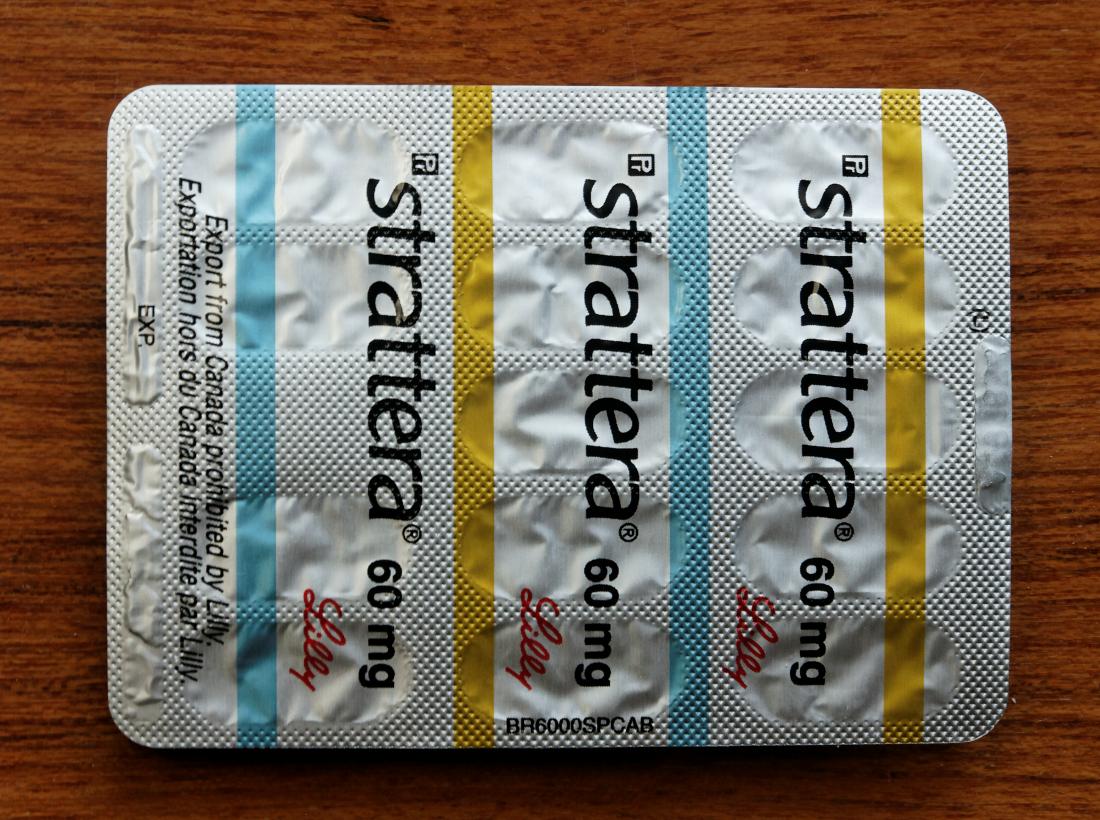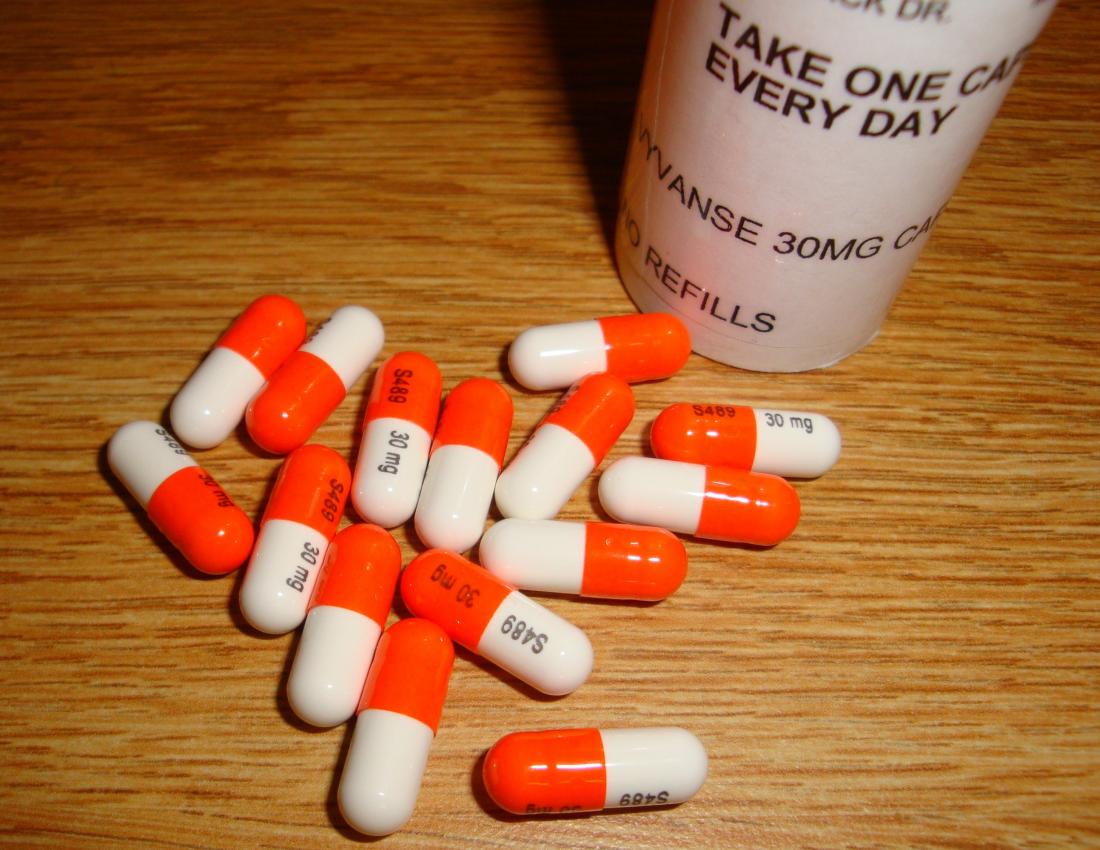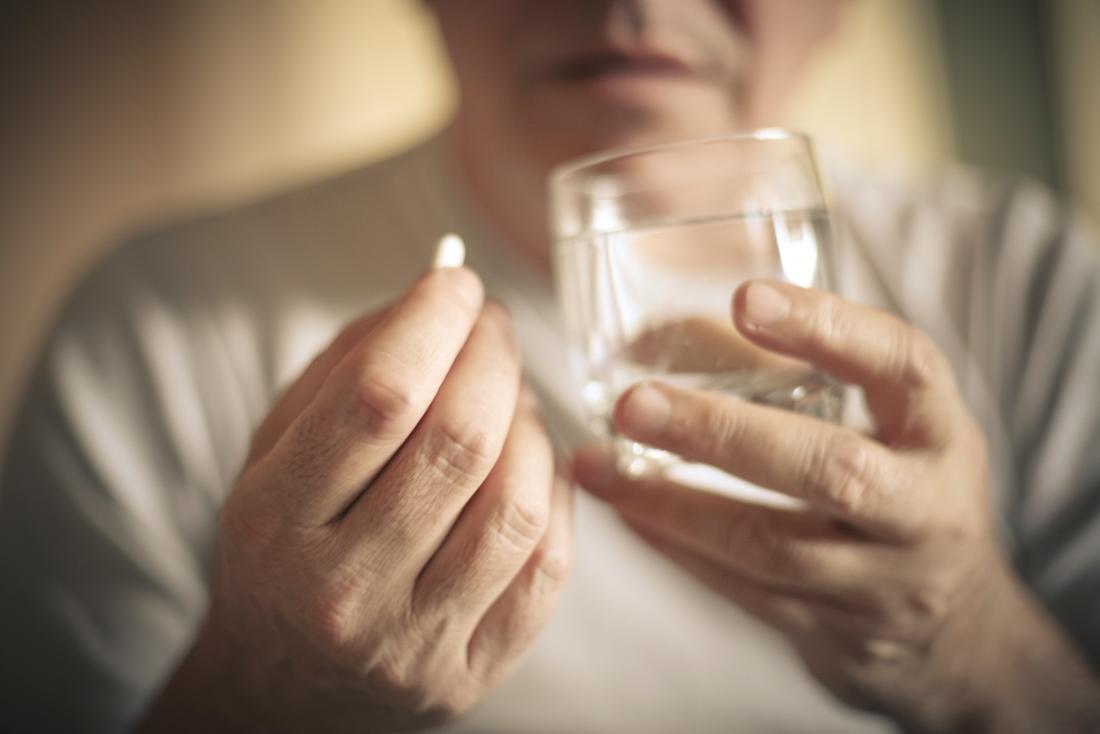Strattera (atomoxetine) and Vyvanse (lisdexamfetamine) have different mechanisms of action to treat attention deficit hyperactivity disorder (ADHD). Strattera is a nonstimulant drug while Vyvanse is a stimulant. There are some differences in their side effects, dosages, risks, and drug interactions.
This article looks at the similarities and differences between Strattera and Vyvanse to help people make decisions about treatment for ADHD.
What is Strattera?

A doctor may prescribe Strattera to treat ADHD.
Image credit: gloom 2010
Atomoxetine, the active ingredient in Strattera, is the best known nonstimulant medication to treat ADHD.
Strattera is technically an antidepressant drug, which doctors classify as a selective norepinephrine reuptake inhibitor (SNRI). Doctors prescribe other SNRI medications to treat depression, but they only prescribe Strattera to treat ADHD.
Strattera works by changing the way a person’s brain uses norepinephrine, which is a neurotransmitter, or brain chemical. Norepinephrine affects a person’s ability to pay attention. Strattera acts on this system to help improve a person’s attention span.
Although nonstimulant medications, such as Strattera, are effective for treating ADHD, they do not work as well as stimulant drugs. They are, however, a better choice for people who do not tolerate stimulants well or have problems with anxiety, which stimulants can adversely affect.
What is Vyvanse?
Vyvanse is a stimulant medication belonging to the amphetamine subgroup. Like Strattera, Vyvanse also affects how the brain uses neurotransmitters.
Vyvanse and other amphetamines block the reuptake of norepinephrine and dopamine in the brain. Dopamine is a neurotransmitter connected to mood, attention, and motivation.
Researchers believe low levels of dopamine and the symptoms of ADHD are linked. Therefore, Vyvanse can help improve the way the brain uses dopamine to assist with symptoms related to attention or motivation.
People also take Vyvanse for the treatment of binge eating disorder in adults.
Doctors classify Vyvanse and other stimulant medications for ADHD as Schedule II drugs, meaning they have a high potential for abuse.
How to take them
Adults and children aged 6 years or older can take Strattera or Vyvanse to help manage the symptoms of ADHD.
Typically, a doctor will start a person on the lowest dose of medication and gradually increase the dosage as appropriate. Factors such as age and weight will influence the dose a person takes.
People can take both medications with or without food. Taking Vyvanse in the morning will help a person avoid insomnia at night.
Strattera and Vyvanse both come in capsule form. Vyvanse also comes in chewable tablets.
Strattera
Strattera capsules come in the following doses:
- 10 mg
- 18 mg
- 25 mg
- 40 mg
- 60 mg
- 80 mg
- 100 mg
The dosage varies depending on a person’s body weight and age.
Children who weigh less than 70 kilograms (kg) should start Strattera at a dose of 0.5 milligrams per kilogram of body weight (mg/kg) and increase this to a target total daily dose of 1.2 mg/kg per day.
Children and adolescents should not take more than 1.4 mg/kg or 100 mg (whichever is less).
Children who weigh more than 70 kg and adults can start at a dose of 40 mg per day and increase this to a target dose of 80 mg per day. After 2–4 weeks, people can increase to 100 mg daily if they have not achieved an ideal response. This dose is the maximum daily dose.
People should swallow the capsules whole rather than breaking them apart.
Typically, people do not need to taper Strattera before discontinuing.
Vyvanse

Vyvanse comes in the form of both capsules and chewable tablets.
Vyvanse capsules come in the following doses:
- 10 mg
- 20 mg
- 30 mg
- 40 mg
- 50 mg
- 60 mg
- 70 mg
Vyvanse chewable tablets come in the following doses:
- 10 mg
- 20 mg
- 30 mg
- 40 mg
- 50 mg
- 60 mg
People aged 6 and over can start taking 30 mg of Vyvanse daily. A doctor may increase the dosage by 10 or 20 mg every week to achieve the desired response. The maximum daily dose is 70 mg daily. The recommended dose is 30–70 mg.
People who take Vyvanse for binge eating disorder also start on an initial dose of 30 mg. They can increase this by 20 mg a week up to a maximum of 70 mg. The recommended dose is 30–70 mg.
People can swallow Vyvanse capsules whole or open the capsule and mix the powder with yogurt, juice, or water.
Vyvanse chewable tablets contain a dosage that is equivalent to the capsule. A person should chew the tablet thoroughly before swallowing.
Side effects
Strattera and Vyvanse appear to have similar side effect profiles. Although Strattera may also lead to side effects of sexual dysfunction.
Common side effects of Strattera include:
- abdominal pain
- nausea
- vomiting
- fatigue
- irritability
- weight loss
- poor appetite
- headache
- sleepiness
- dizziness
- rash
- heart racing
- dry mouth
- constipation
- chills
- numbness and tingling
- insomnia
- trouble urinating
- erectile dysfunction or ejaculation disorder
- increased sweating or hot flashes
Common side effects of Vyvanse include:
- decreased appetite
- difficulty sleeping
- abdominal pain
- irritability
- vomiting
- weight loss
- nausea
- dry mouth
- dizziness
- rash
- heart racing
- tremor
- diarrhea
- anxiety
- agitation
- increased sweating
- shortness of breath
Risks
There are some risks a person should be aware of when considering Strattera or Vyvanse.
Since Vyvanse contains a stimulant, it carries a high risk of abuse and dependence.
Both Strattera and Vyvanse have the potential to cause sudden cardiac death and raise blood pressure or heart rate. People who have known underlying heart problems should avoid these medications.
Both Strattera and Vyvanse can induce psychotic symptoms, including hallucinations or mania in children and adolescents, even in those without a known history of psychotic disorder.
Additionally, Strattera has links to an increased risk of suicidal thoughts in children and adolescents. A doctor should monitor people who begin taking Strattera or Vyvanse for changes in behavior.
Strattera and Vyvanse may interfere with growth and weight in children, and therefore, a doctor should monitor the child’s growth.
Suicide prevention
- If you know someone at immediate risk of self-harm, suicide, or hurting another person:
- Call 911 or the local emergency number.
- Stay with the person until professional help arrives.
- Remove any weapons, medications, or other potentially harmful objects.
- Listen to the person without judgment.
- If you or someone you know is having thoughts of suicide, a prevention hotline can help. The National Suicide Prevention Lifeline is available 24 hours a day at 1-800-273-8255.
Drug interactions
Strattera and Vyvanse may interact with certain medications. A person should always tell their doctor about all of the other medicines they take, including over-the-counter (OTC) medicines, supplements, and herbal remedies.
Strattera and Vyvanse may interact with other medications used for depression, including monoamine oxidase reuptake inhibitors (MAOIs), serotonergic drugs, and tricyclic antidepressants (TCAs).
Some medications, including quinidine and ritonavir, can affect the metabolism of Strattera or Vyvanse, resulting in higher levels of the drug in the body.
How to choose between Strattera and Vyvanse

A doctor can explain the benefits, risks, and side effects of either drug.
Both medications are effective in improving the symptoms of ADHD.
Stimulants like Vyvanse are the most common drug for treating ADHD. However, nonstimulant medications such as Strattera may be a better option for some people, especially those who are not able to tolerate stimulants.
A person should talk to their doctor about the benefits, risks, and side effects of taking different ADHD medications. The doctor will develop an individualized treatment plan to fit what is best for that person.
Summary
Strattera and Vyvanse are medications that treat the symptoms of ADHD. Vyvanse contains amphetamine, which is a stimulant. Strattera does not contain a stimulant. Children over the age of 6, as well as adults, can take these medications.
The two medications have different mechanisms of action to treat ADHD. They also carry individual risks and side effects.
People should discuss with their doctor to determine the most appropriate treatment for ADHD symptoms.
Q:
Is it safe to take Strattera and Vyvanse together?
A:
Strattera and Vyvanse do not have a direct drug interaction, but it is not common to take both together. However, there are some situations when someone might be taking both. Strattera has a delayed onset of action, and a person might take Vyvanse to help bridge or treat their ADHD symptoms while the Strattera takes effect. Once the Strattera has time to start working, the person would stop using Vyvanse and continue only taking the Strattera.
Dena Westphalen, PharmD
Answers represent the opinions of our medical experts. All content is strictly informational and should not be considered medical advice.
